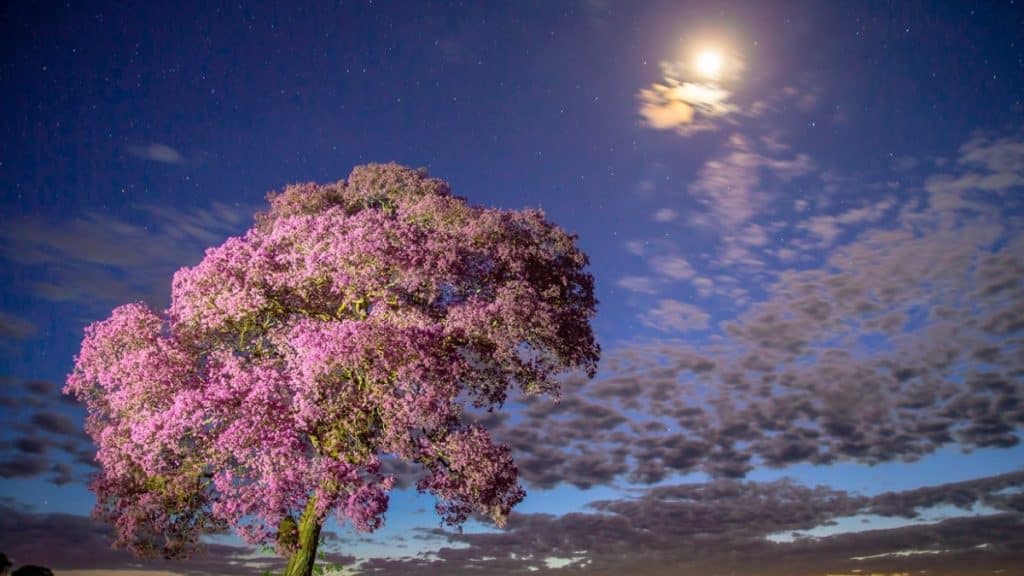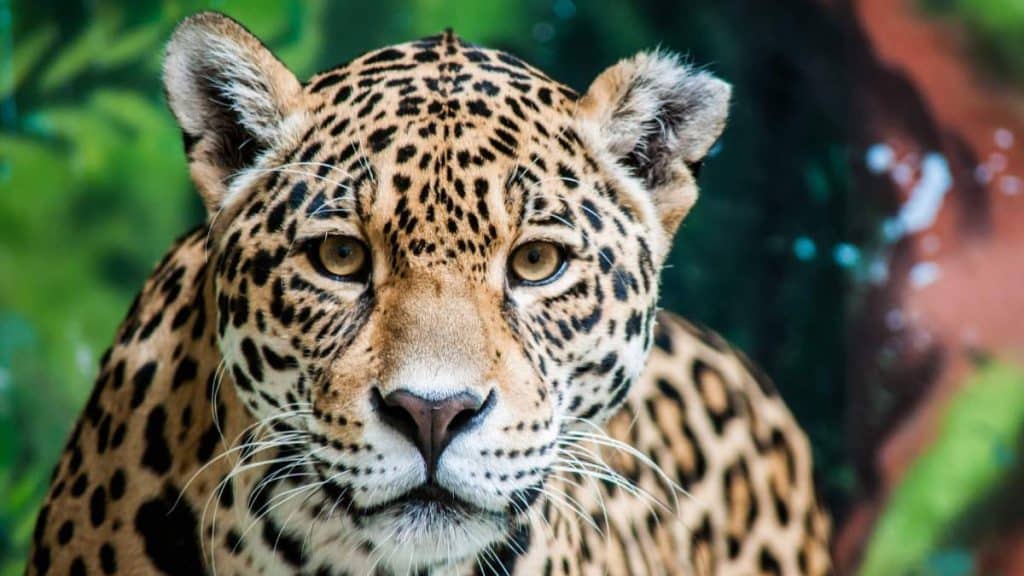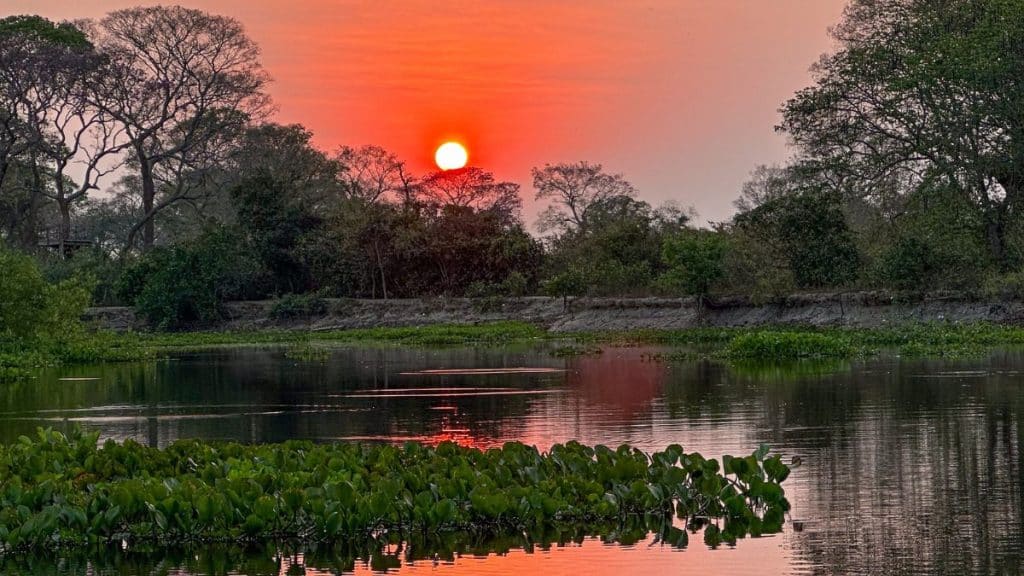When dusk shrouds the Pantanal, a different world comes to life. Hidden by day, the nighttime life of the wetland is an enchanting revelation to guests who choose to explore it. Many nocturnal creatures live in the Pantanal. Step into the night and see what you find there.
Pantanal’s Wonderful Nocturnal Kingdom
Before you open your door, however, please check your feet. A nighttime safari is not the occasion for sandals. Your guide will want to see you in shoes, socks, and long pants for maximum protection. Lots of insects will be drawn to the beam of your flashlight. There are other night creatures, too, that you want to keep away from your bare skin. But more on those later.
When you first step outside, look up. The magnificent night sky of the Southern Hemisphere will never look better or brighter than it does in the Pantanal. You are far away from any city or town. No ambient light interferes with the spectacle in the sky. And, in the open landscape of the Pantanal, the heavens are wide and unobstructed. The fabled Southern Cross is the beacon in this night sky and, for visitors from the north, a whole new array of constellations sparkles against the blackness. Thanks, too, to the absolute darkness, the Pantanal is a perfect spot for viewing the Milky Way. Our galaxy glows in its unmistakable arc across the sky. Go ahead and take some pictures. You’ll never have a better view.
Now, start looking — and listening, too. You will find some of the birds tonight with your ears first. Several species of owl live in the Pantanal. The largest is the Great Horned Owl, whose deep, resonant hooting can be heard for miles. You might hear the distinctive call of the Striped Owl: a series of hoots followed by a series of clacks it produces by snapping its bill together. If you hear the rasping screech of the American Barn Owl, you might be able to photograph its heart-shaped face. The tiny Ferruginous Pygmy Owl has a distinctive call that resembles a series of hollow whistles in a rhythmic pattern. When you hear owls, your guide will help you identify and locate them with your flashlight.
Of course, owls do not own the night in the Pantanal. One of the signature sounds of the wetland is the haunting call of the Greater Potoo, whose drawn-out cries of “wa-hoo” carry over long distances. An array of Nightjars also shares the evening skies of the marshland. If the moon is bright, you might see their aerial acrobatics as they chase insects. The Nacunda Nighthawk, the Band-tailed Nighthawk, and the Common Paraque are all Nightjars. Both the Nighthawk species have cries that sound like “peent,” while the male Paraque has a repertoire that ranges from rising whistles to frog-like grunts. Many other Nightjar species will add to the evening soundtrack. Again, your well-trained guide will help you sort them out.
As you keep your ears tuned to the birdsong, keep your eyes on the ground. Stay near your guide and watch where you step. After dark, many of the reptiles of the Pantanal emerge from their daytime hideaways or secret basking spots to hunt. Some of them are snakes and some of the snakes are venomous. They are interesting creatures and they certainly aren’t hunting you, but if you step too close they might strike in self-defense. The shoes, socks, and trousers that you have sensibly chosen will help protect you. You could see any of the several pit vipers found in the Pantanal. The South American Rattlesnake is a common one. Others include the Caicaca, also known as the Brazilian Lancehead, the Urutu, and the Jaracara. All these snakes carry payloads of potent venom. If you see one, take a picture, but not a close-up!
Many of the lizards of the wetlands come out at night. The Amazon Lava Lizard is a small species, about 8 inches long from its nose to the tip of its tail. That tail is an appendage that the Lava Lizard can drop if a predator grabs it. A larger lizard you might see is the Giant Ameiva, not really a giant at about 20 inches long, but a handsome species. The males, particularly, are a brilliant green. The big lizards will be the easiest to spot on your night safari. The Black and White Tegu, a Pantanal resident that can grow to 4 feet in length, is another species that can shed its tail in an emergency. Because of its size, however, it also uses that powerful tail as a weapon to strike attackers. You’re sure to recognize the Green Iguana if you come across one. It’s the classic lizard species so often kept as a pet. At home in the Pantanal, they can grow to more than five feet long. Caiman are the biggest reptiles here and you will easily see them at night, when they are most active. After basking on the riverbanks all day, they take to the water after dark to hunt. Your flashlight will pick out their eerie red eyeshine up and down the rivers, particularly if you go out on a night cruise.
An evening boat trip is also a good opportunity to see the little Proboscis Bats that establish small colonies on the undersides of bridges. If your cruise is at dusk, you may well catch them as they fly out into the night. They are the smallest mammals you’re likely to see. On the other end of the scale, the night safari is an excellent chance to find some big animals like the Brazilian Tapir. Weighing in around 500 pounds, the Tapir spends most of its days in the water, where it is an excellent swimmer. At night, it sleeps on the riverbank where you may easily spot it. Another big mammal, the extraordinary-looking Giant Anteater, is nocturnal; its search for termite mounds sometimes attracts hungry Caiman or Jaguars. However, the Giant Anteater, although it has no teeth, is formidably armed with very large, very sharp claws. If it has the chance to rear up on its hind legs, it can fight off a Jaguar. Finally, the Crab-eating Fox is the Pantanal’s nocturnal canine. In the rainy months, it is out on the mud flats by night, digging for crabs. During the dry season, though, you might see it hunting for rodents or insects among the grasses.
Travel With Us
The Pantanal by night is the domain of fascinating creatures. Animals that you might never see by day are busy in the darkness, usually on the hunt, accompanied by a haunting soundtrack of birdsong. South Wild’s guides are experts at showing you this mysterious and enchanting nocturnal kingdom. Come and see it for yourself. The nightscape of the Pantanal is waiting for you under the Southern Cross.



